Beneath the Planet of the Apes (1970) – An End Times Allegory.
“In one of the countless billions of galaxies in the universe lies a medium-sized star, and one of its satellites, a green and insignificant planet, is now dead.”
The warning bells ring when a film begins with the ending of its predecessor. But, though it’s a rather forced reminder of what came before, Taylor and Nova’s discovering the remnants of human civilisation does set off the events to come thematically. In 1970 sequels were uncommon in a studio system that valued original concepts first and foremost. It’s before a time of Star Wars, Star Trek, Indiana Jones, and all that came after. Science-fiction had not yet earned its widespread appeal, and home video did not exist (which can excuse the clunky opening scene).
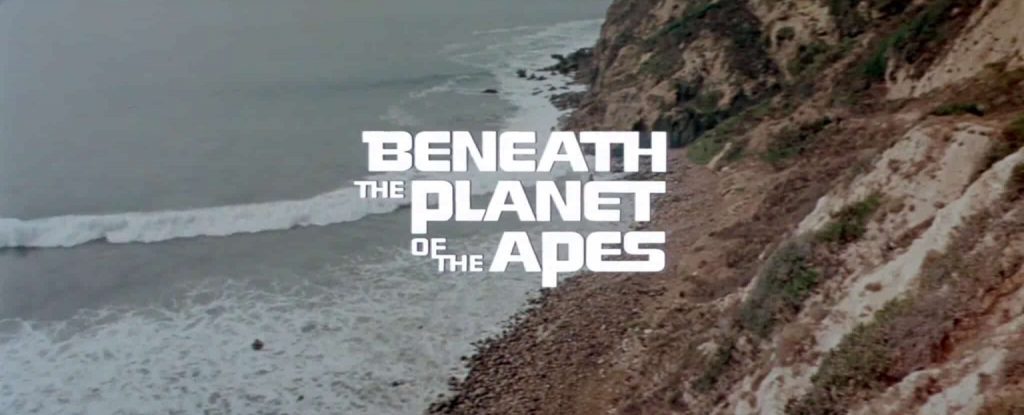
20th Century Fox was floundering. The shock success of 1968’s Planet of the Apes was succeeded by back-to-back box office failures and the studio hoped that recreating the success of the Charlton Heston-led science-fiction dystopian epic might pull it out of a rut. But development was not a smooth process. Due to the failures of Hello, Dolly! and Tora! Tora! Tora!, the studio was nearing bankruptcy. The budget was halved from $5 million down to $2.5 million. Franklin J. Schaffner could not return as director due to production on Patton. The studio instead turned to Ted Post, who initially had doubts; he believed the script had little purpose and even less to say.
The original film’s screenwriter, Rod Serling, offered some conceptual ideas that were quickly rejected and the author of the novel on which the first film was based, Pierre Boulle, pitched a sequel titled Planet of the Men. In this, Heston would return as Taylor in the lead role. Taylor would lead an uprising against the ape colony to take back the planet and rebuild the societies of man. But the famous close of the original film set the bar too high and the studio felt that Boulle’s ideas didn’t offer enough surprises to win over a returning audience. Paul Dehn was brought in to pen a new script, initially titled Planet of the Apes Revisited. A hybrid ape-human character was conceptualised but ultimately scrapped for fears that it implied bestiality and would hurt the film’s rating.
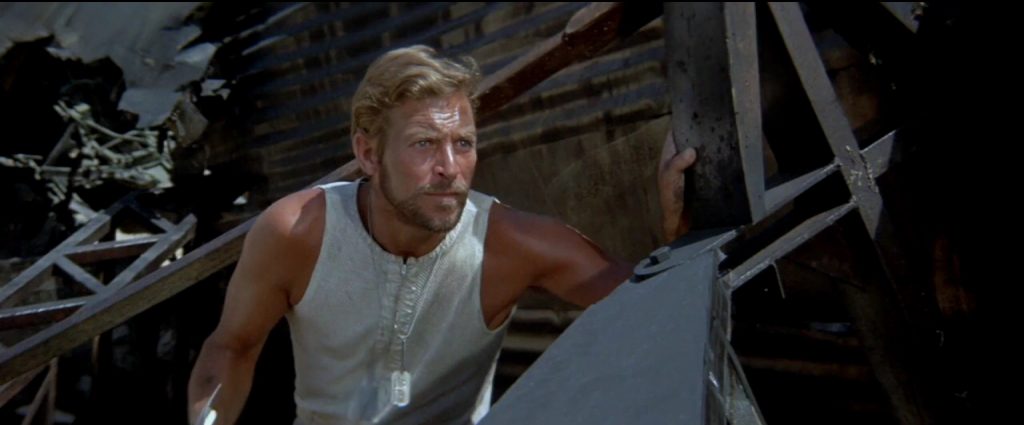
Beneath the Planet of the Apes is not a long film; it’s almost twenty minutes shy of the first film’s runtime of not quite two hours. Beneath cuts the slow, methodical build-up of the first film for good reason. Another ship crash-lands on the Earth of the distant future, and we meet another handsome, bearded astronaut who’s stranded and alone. He soon spots a gorgeous mute woman in the distance and discovers that she knows who (but not where) Taylor is – and all that we know is that he’s vanished into the mysterious Forbidden Zone.
Heston’s refusal to appear caused even further grief during pre-production. He’d played his part in the 1968 film and he was happy with how it had turned out. He had no desire to do it all again. Though there was ill favour and some conflict between the studio and Heston’s agent, Heston ultimately agreed to appear briefly (his screen-time equates to roughly eighteen minutes) so long as his character died in the end. He would also donate his entire earnings to charity.
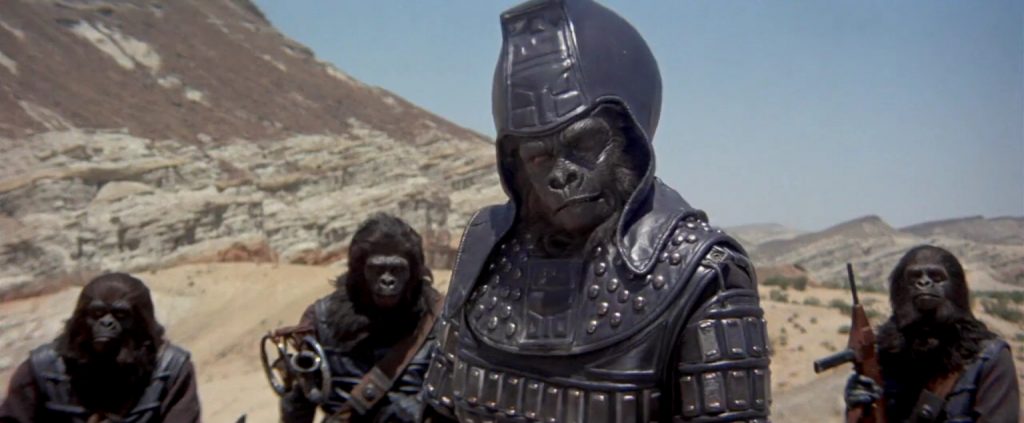
Through the eyes of a new protagonist in Brent, the events are somewhat different and the script’s intentional early repetition is cute more than anything. James Franciscus, mostly known for his television acting at the time, was brought on to play the Taylor-lite character. The actor himself was aware of the character’s shortcomings, and helped flesh him out; Franciscus himself can be attributed to some of Brent’s most illuminating dialogue.
Nova (Linda Harrison) takes Brent to the ape colony soon after the two meet and there’s something rather welcoming about Brent’s own personal reaction to the remarkable thing that he discovers (“it’s a city of apes!”). It’s a soft reminder that this is still a great mystery – we truly know little yet about the world we’re seeing, only that humans destroyed themselves centuries ago.
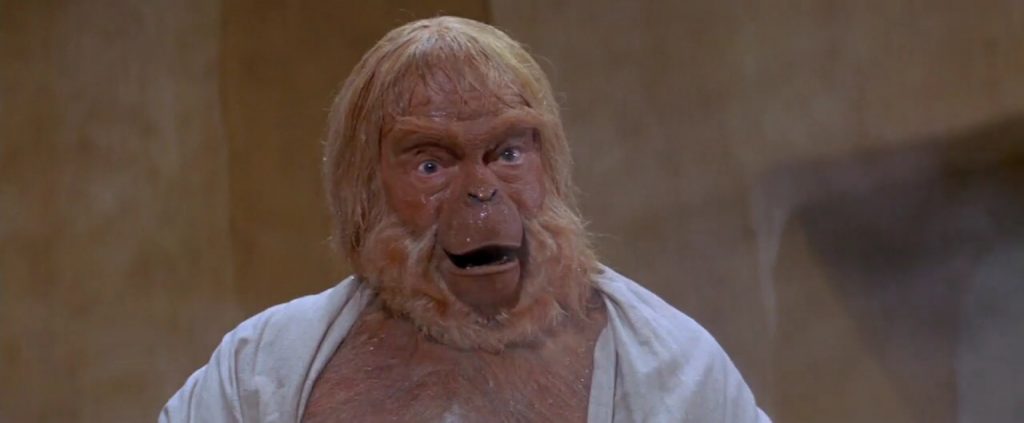
But again, though the events are similar – a man from the past discovers a world ruled by talking apes – they unfold very differently. Brent spies a town meeting in which the gorilla soldiers, led by General Ursus (James Gregory – Orson Welles was offered the role but he turned it down), are demanding an attack on the Forbidden Zone, from which a group of soldiers on a scouting mission never returned. Ape City falls under military control. A peaceful protest is nearly violently ended before Ursus opts to have the rebels thrown in cages. Doctor Zaius (Maurice Evans), so famously a man of both science and faith, opts to accompany the army of gorillas to the Forbidden Zone. Accepting defeat in the situation, he hopes he can wrest some control back by his presence on the mission alone.
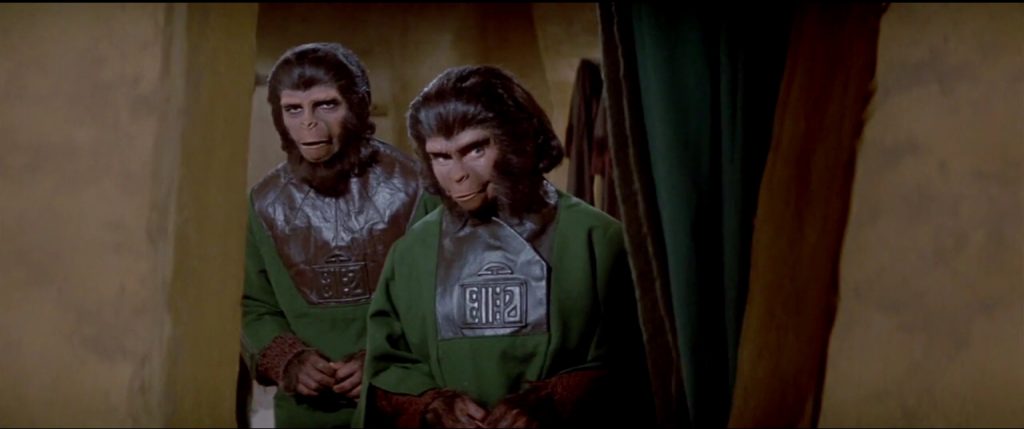
Much of the militant rise and anti-war sentiment in the Ape City, though underplayed by the permanent shift in setting soon after, blatantly reflects the anti-war protests of the turbulent late sixties. The abrupt eschewing of protesters as the gorillas begin their march to war seems a reaction to the election of Nixon in 1968, whose journey into office is largely credited to the silent majority of middle-class Americans who had become frustrated by the fights against social injustice.
Brent and Nova meet with Zera (Kim Hunter) and Cornelius (David Watson; it would be the first and only time Roddy McDowall would not perform original scenes in the five films) before going their separate ways. The two are comically captured soon after before Zera intervenes yet again to ensure that the humans have a chance. Sadly, we don’t see Hunter again in the film, and her most memorable moment in it is unfortunately a gag involving some light domestic violence insinuations. Dehn’s script begins to speed up once Brent and Nova enter an underground railway station, following an enjoyable enough horseback chase where Brent finally learns the truth. Again, he makes the same discovery that Taylor had at the end of the last film, but it works due to fresh set design and location choices. Here, the similarities dissipate.
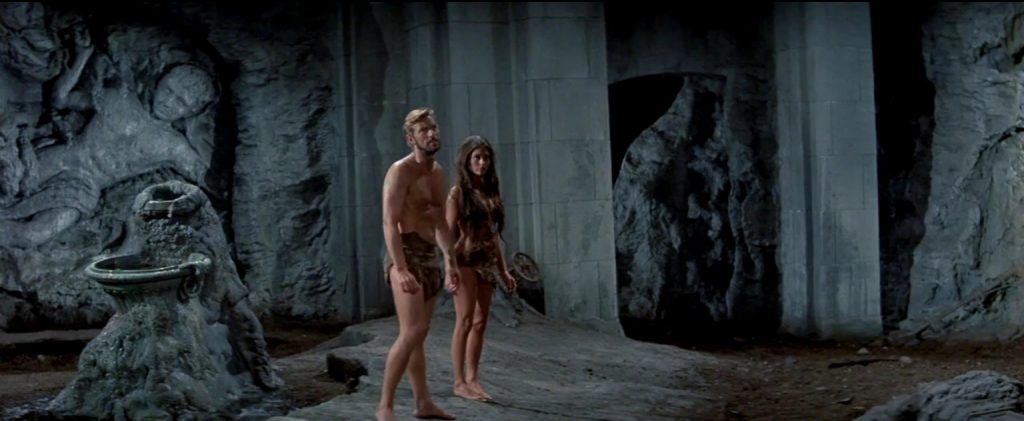
The concept of an evolved, mutant society of humans capable of telepathic warfare, a people who hide behind the falsity of peace by claiming that they pit their enemies against each other, and who worship a nuclear bomb, is darkly comic. The parallels to the world from which Taylor and Brent have come are frightening. The idea that violence is justified, and the omission of guilt and even choice for their actions is derived from linguistic technicalities, advanced weaponry, and guided by their extremist beliefs is strikingly topical. Just eight years after the Cuban Missile Crisis and the widespread fear of nuclear war, Dehn draws inspiration not only from this but from his trauma over the bombing of Hiroshima in 1945.
Brent and Nova are captured again within the underground mutant city, and Brent is forced to reveal the coming attack from the apes. Beneath‘s irony is hard to miss; as with the symbolism of the alpha and the omega (the beginning and the end), and the apes marching in with guns blazing mirroring the self-destructive nature of humans as described by Doctor Zaius. When Brent finally finds Taylor, the two are jubilant as they embrace in a jail cell before the mutant behind the door again practices nonviolence by pitting the two men against each other in deadly combat. The fight itself is brutal and bloody, though it ends conveniently when the mutant enters the cell and, for whatever reason, refuses to exit it again once he’s lofted the weapon down to the ground for the two men to fight over.
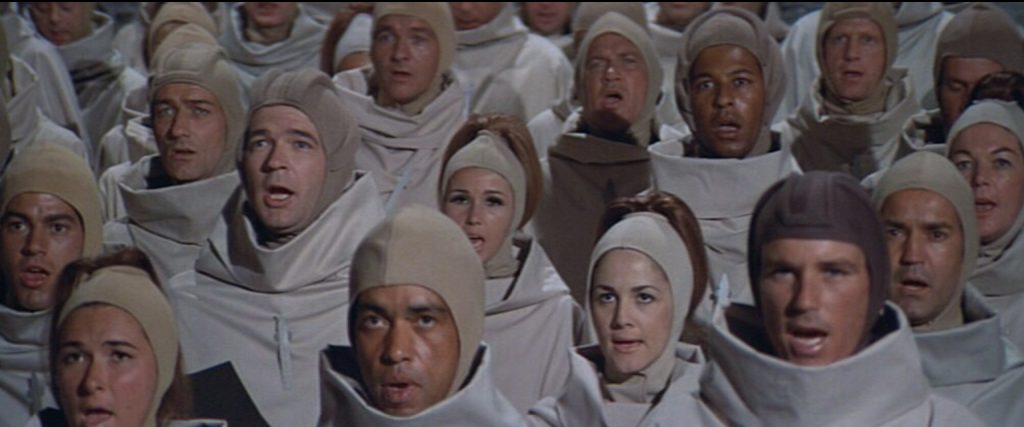
The ape soldiers weave their way through the underground fortress, breaking monuments to humanity and killing any mutants they come by. The climax takes place in a cathedral, in front of the giant, ancient and now activated doomsday weapon that threatens to destroy the planet. The apes, with relative ease, win the battle. In an alternate ending, Taylor, Nova and Brent escape just before the bomb (not of the doomsday kind) is detonated. The trio make it back to the ape colony where they’re reunited with Zera and Cornelius. The caged humans are freed. A hundred years later, humans and apes are living together in harmony.
But that’s not the ending we get. Instead, ignorance, blind faith, and the crippling similarities between the two species merge, and the events to follow are inevitable. Nova is killed in the escape from jail. Taylor and Brent attempt to stop the apes in the cathedral from setting off the bomb, but are both killed in the process. The gorillas pull the bomb to the ground with mindlessly aggressive impulse. As Taylor dies, his hand comes down on the red switch.
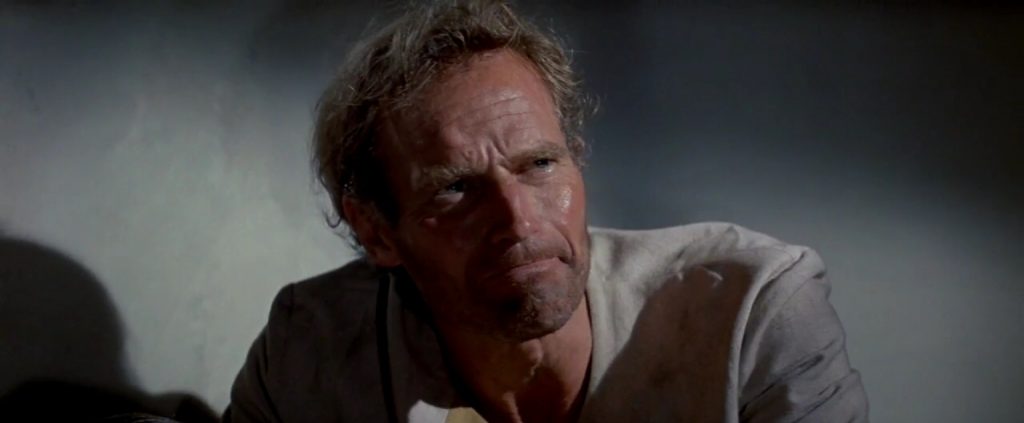
Beneath the Planet of the Apes was a box office success, earning $19 million on a $3 million budget and remained at number one at the U.S. box office for its first two weeks. However, it wasn’t as successful with critics. Its story is far from subtly laid out, and the drop in quality between it and the film before it is hard to ignore. And yet it feels of a piece with the original, and brings an allegoric tale of a planet ruled by apes to a close in the cleanest of ways, by destroying everything we’ve ever known.
Film ‘89 Verdict – 7/10
